18.07.2017
ISRO gearing up for second prototype test of RLV-TD
By Tiki Rajwi | Express News Service | Published: 17th July 2017 08:23 AM |
Last Updated: 17th July 2017 08:24 AM | A+A A- |
THIRUVANANTHAPURAM: A little over a year since the successful flight test of the first prototype of the futuristic Reusable Launch Vehicle - Technology Demonstrator (RLV-TD), ISRO is gearing up for a second go. Only this time, the prototype will ‘land’ on land instead of water.
Work is progressing at the Vikram Sarabhai Space Centre (VSSC) here on the second RLV-TD. A senior officer associated with the project said the RLV-TD will almost be a ditto version of the first scaled-down RLV-TD with the only exception being it will have landing gear.
ISRO sources said it may take another year for the model to be ready. They said the present plan is to launch the RLV-TD from Sriharikota and land it on an undisclosed Air Force airfield in the eastern sector. This is yet to be finalised though, they said.

The unmanned RLV-TD comprises a space shuttle-like component fitted atop a booster rocket. The first RLV-TD weighing 1.5 tonnes, was successfully launched from Sriharikota on May 23 last year and splashed down in the Bay of Bengal from a height of 64.8 km.
While VSSC is primarily responsible for building the RLV-TD, the navigational equipment are being provided by the ISRO Inertial Systems Unit in Thiruvananthapuram and ISRO’s Satellite Applications Centre, Ahmedabad. Hindustan Aeronautics Ltd is responsible for the landing gear.
In fact, ISRO plans a series of TDs before attempting to build a fully-fledged vehicle that can be reused for launching satellites. A subsequent TD will possibly involve a slightly larger vehicle which will place a nano-satellite in the orbit.
Quelle: THE NEW INDIAN EXPRESS
---
Update: 22.04.2018
.
Isro plans orbital re-entry test for re-usable vehicle
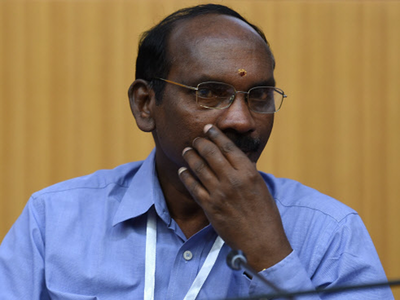
Isro chief K Sivan (File Photo)


BENGALURU: Isro is set to follow up the successful tests of the re-usable launch vehicle technology demonstrator (RLV-TD) with a major experiment, though the immediate priority is the Chandrayaan-II mission slated for an October launch. It has completed the wind tunnel model with landing gear and low subsonic tests at the IIT-Kanpur.
In the next phase, Isro has proposed to design and develop a scaled-up version of RLV and carry out an orbital re-entry experiment.
“Site has been identified for the experiment and configuring landing runway with navigational aids for an autonomous descent. For unmanned landing, navigational aids and associated systems have to be established,” scientists working on the project said.




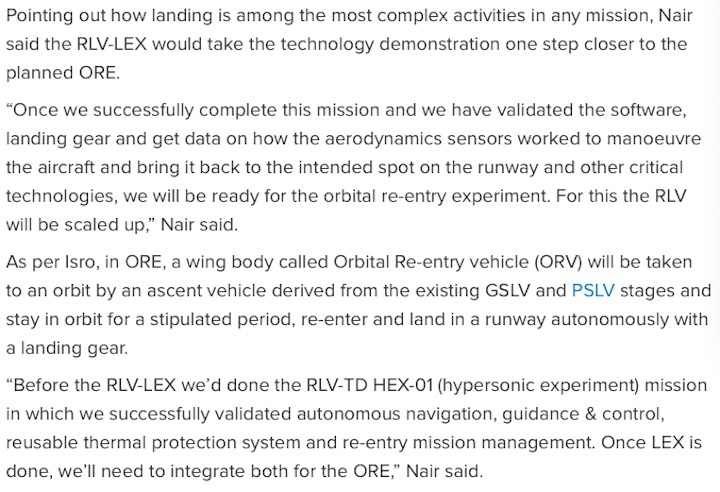
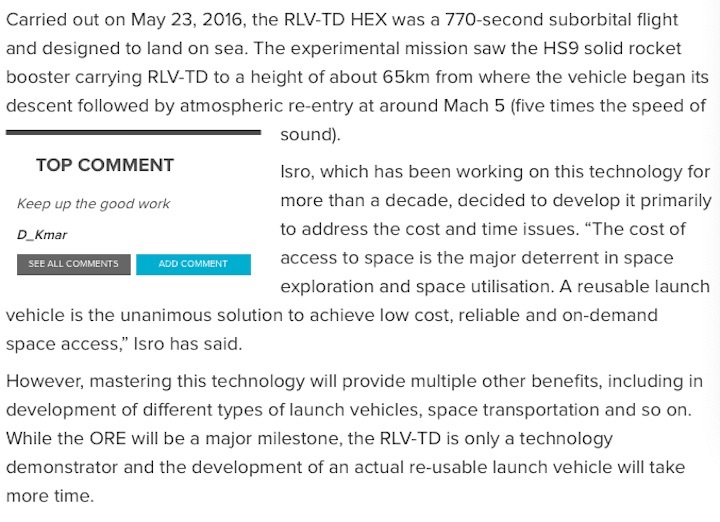
ISRO Set For 1st Runway Landing Of India-Made Space Shuttle: Chairman
ISRO Reusable Launch Vehicle: "We are looking at the climate. Climate is still not good. So, we are waiting for the wind and other systems to become benign. We will do that," Mr Somanath, also Secretary in the Department of Space, told Press Trust of India.

ISRO is set for the first runway landing experiment of its reusable launch vehicle or RLV.
Bengaluru:
The Indian Space Research Organisation is set for the first runway landing experiment (RLV-LEX) of its made-in-India Reusable Launch Vehicle - Technology Demonstrator (RLV-TD) from aeronautical test range in Karnataka's Chitradurga district, with its Chairman S Somanath indicating that weather is being monitored.
"We are looking at the climate. Climate is still not good. So, we are waiting for the wind and other systems to become benign. We will do that," Mr Somanath, also Secretary in the Department of Space, told Press Trust of India.

According to ISRO officials, the RLV wing body will be carried using a helicopter to an altitude of three to five km and released at a distance of about four to five km ahead of the runway with a horizontal velocity. After the release, the RLV will glide, navigate towards the runway and land autonomously with a landing gear in the defence airfield near Chitradurga.
Sources in the national space agency headquartered in Bengaluru earlier told Press Trust of India that new systems like landing gear, parachute, hook beam assembly, radar altimeter and pseudolite have been developed and qualified.
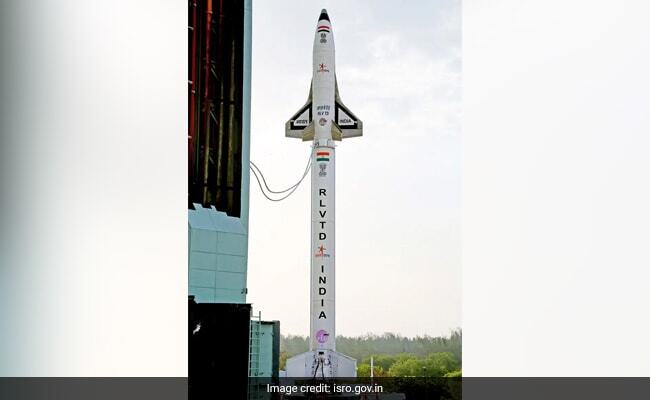
ISRO accomplished its maiden RLV-TD HEX-01 (Hypersonic Flight Experiment-01) mission on May 23, 2016 from SDSC SHAR and successfully demonstrated the critical technologies for design and flight testing of re-entry vehicles. However, it was a suborbital flight and designed to land on sea.
Isro to test landing of its Reusable Launch Vehicle: All you need to know
RLV is Isro's attempt at developing essential technologies for a fully reusable launch vehicle to enable low-cost access to space.
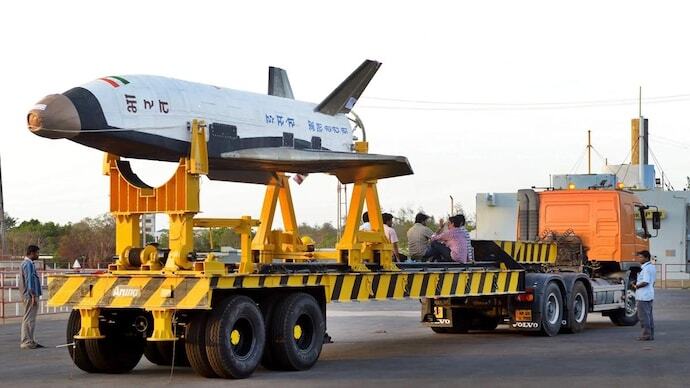
RLV's configuration is the same as that of an aircraft and combines the complexity of both launch vehicles and aircraft. (Photo: Isro)
By India Today Web Desk: The Indian Space Research Organisation (Isro) is set to conduct the maiden landing demonstration of the Reusable Launch Vehicle (RLV), which is in its technology demonstration phase. The spacecraft resembles Nasa's space shuttles that acted as the US space agency's biggest transporter into Low Earth Orbit (LEO).
The Indian space agency is likely to conduct the maiden landing demonstration of the technology, bringing India one step closer to reusable launch vehicles that could be used to launch not just satellites but also astronauts into space in the near future. The space agency has hinted that the landing demonstration could happen in the next couple of weeks.
WHAT IS ISRO'S RLV?
RLV is Isro's attempt at developing essential technologies for a fully reusable launch vehicle to enable low-cost access to space. The Indian space agency has established itself as a cost-effective launch service provider in the billion-dollar satellite launch market and the new system will further strengthen its position.
According to Isro, the RLV's configuration is the same as that of an aircraft and combines the complexity of both launch vehicles and aircraft. "The winged RLV-TD has been configured to act as a flying test bed to evaluate various technologies, namely, hypersonic flight, autonomous landing, and powered cruise flight," Isro said on the mission page.
The system consists of a fuselage (body), a nose cap, double delta wings, and twin vertical tails along with symmetrically placed active control surfaces called Elevons and Rudder. A conventional solid booster (HS9) designed for a low burn rate pushes the system to a speed of Mach 5 (five times the speed of sound.)
"The selection of materials like special alloys, composites, and insulation materials for developing an RLV-TD and the crafting of its parts is very complex and demands highly skilled manpower. Many high technology machinery and test equipment were utilised for building this vehicle," Isro said.
WHY IS ISRO BUILDING REUSABLE LAUNCH VEHICLE?
The key objective behind developing the reusable system is to stand firm in the launch market, which today is dominated by SpaceX, thanks to its reusable Falcon-9 rockets. The Elon Musk-led company conducted 61 successful launches on the back of its reusable system in 2022 and plans to boost those numbers to 100 in 2023. Isro is targeting this market and a reusable launch vehicle will take it far.
The main objective behind the system is to develop a hypersonic aero thermodynamic characterization of the wing body, evaluate autonomous navigation, guidance and control schemes, integrated flight management, and thermal protection system evaluation.
Isro successfully conducted a flight test of the RLV-RD in 2016 from Sriharikota, which validated the critical technologies such as autonomous navigation, guidance & control, reusable thermal protection system, and re-entry mission management.
WHAT HAPPENS DURING LANDING DEMONSTRATION?
As part of the landing demonstration, the reusable launch vehicle will be lifted by the Indian Air Force's helicopter to a designated altitude and then dropped. Following this, the system will take over and Isro hopes that the fly-by-wire system will ensure a safe and intact landing just like an aircraft on a runway.
Initially, Isro had planned the lifting to be conducted by a Mi-17 chopper. However, with IAF getting Chinhooks, that plan is likely to change. The date for the landing demonstration will be released once the lifting trial is completed with the IAF's heavy-lift helicopter.
Quelle: INDIA TODAY
----
Update: 3.04.2023
.
ISRO successfully conducts the Reusable Launch Vehicle Autonomous Landing Mission (RLV LEX)
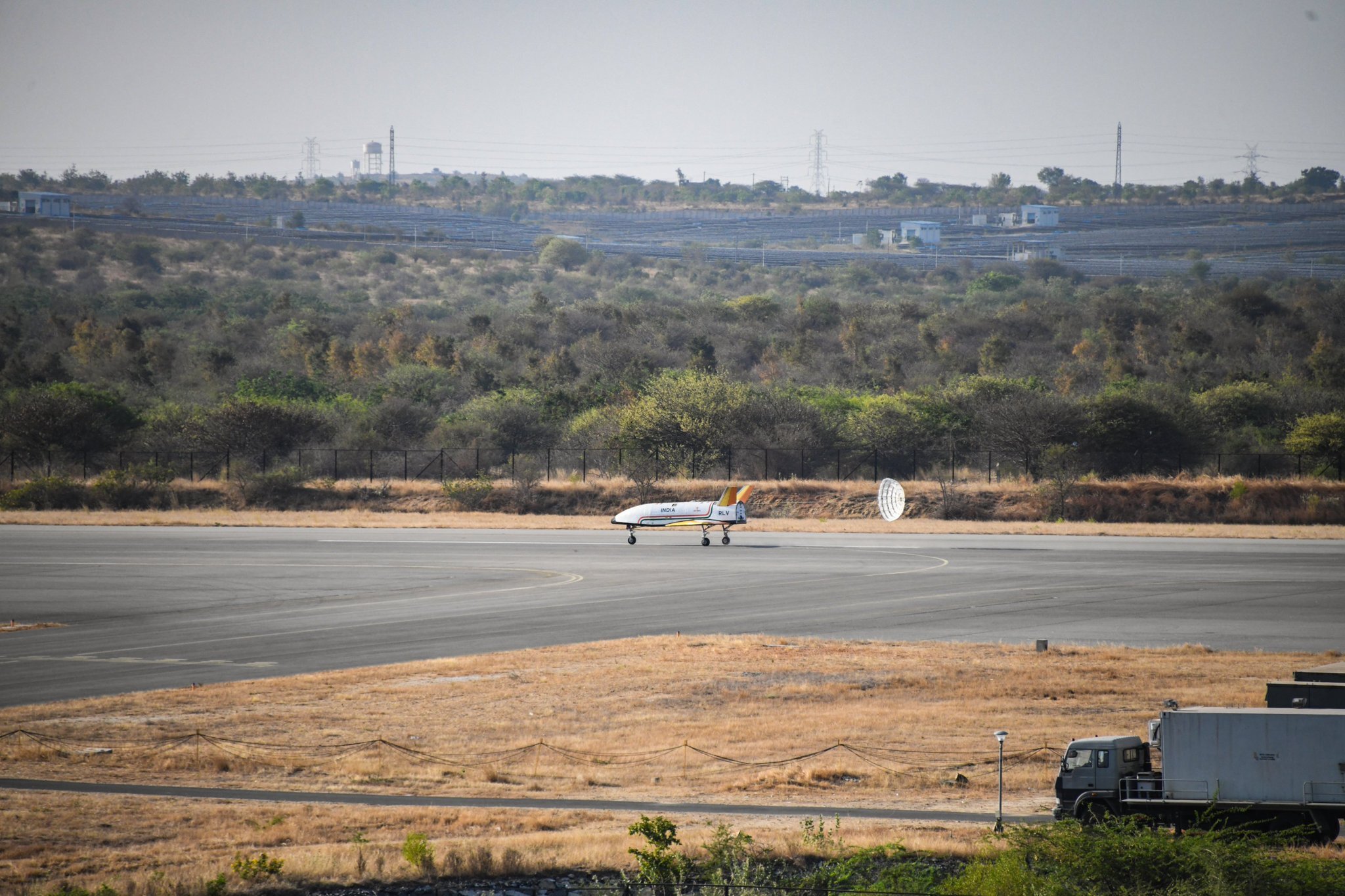
SRO successfully conducted the Reusable Launch Vehicle Autonomous Landing Mission (RLV LEX). The test was conducted at the Aeronautical Test Range (ATR), Chitradurga, Karnataka in the early hours on April 2, 2023.
The RLV took off at 7:10 am IST by a Chinook Helicopter of the Indian Air Force as an underslung load and flew to a height of 4.5 km (above MSL). Once the predetermined pillbox parameters were attained, based on the RLV's Mission Management Computer command, the RLV was released in mid-air, at a down range of 4.6 km. Release conditions included 10 parameters covering position, velocity, altitude and body rates, etc. The release of RLV was autonomous. RLV then performed approach and landing maneuvers using the Integrated Navigation, Guidance & control system and completed an autonomous landing on the ATR air strip at 7:40 AM IST. With that, ISRO successfully achieved the autonomous landing of a space vehicle.
The autonomous landing was carried out under the exact conditions of a Space Re-entry vehicle's landing —high speed, unmanned, precise landing from the same return path— as if the vehicle arrives from space. Landing parameters such as Ground relative velocity, the sink rate of Landing Gears, and precise body rates, as might be experienced by an orbital re-entry space vehicle in its return path, were achieved. The RLV LEX demanded several state-of-the-art technologies including accurate Navigation hardware and software, Pseudolite system, Ka-band Radar Altimeter, NavIC receiver, indigenous Landing Gear, Aerofoil honey-comb fins and brake parachute system.
In a first in the world, a winged body has been carried to an altitude of 4.5 km by a helicopter and released for carrying out an autonomous landing on a runway. RLV is essentially a space plane with a low lift to drag ratio requiring an approach at high glide angles that necessitated a landing at high velocities of 350 kmph. LEX utilized several indigenous systems. Localized Navigation systems based on pseudolite systems, instrumentation, and sensor systems, etc. were developed by ISRO. Digital Elevation Model (DEM) of the landing site with a Ka-band Radar Altimeter provided accurate altitude information. Extensive wind tunnel tests and CFD simulations enabled aerodynamic characterization of RLV prior to the flight. Adaptation of contemporary technologies developed for RLV LEX turns other operational launch vehicles of ISRO more cost-effective.
ISRO had demonstrated the re-entry of its winged vehicle RLV-TD in the HEX mission in May 2016. The re-entry of a hypersonic sub-orbital vehicle marked a major accomplishment in developing Reusable Launch Vehicles. In HEX, the vehicle landed on a hypothetical runway over the Bay of Bengal. Precise landing on a runway was an aspect not included in the HEX mission. The LEX mission achieved the final approach phase that coincided with the re-entry return flight path exhibiting an autonomous, high speed (350 kmph) landing. The LEX began with an Integrated Navigation test in 2019 and followed multiple Engineering Model Trials and Captive Phase tests in subsequent years.
Along with ISRO, IAF, CEMILAC, ADE, and ADRDE contributed to this test. The IAF team hand in hand with the Project team and multiple sorties were conducted to perfect the achievement of release conditions. Dr. S Unnikrishnan Nair, Director, VSSC, and Shri Shyam Mohan N, Programme Director, ATSP guided the teams. Dr. Jayakumar M, Project Director, RLV was the Mission Director, and Shri Muthupandian J, Associate Project Director, RLV was the Vehicle Director for the mission. Shri Ramakrishna, Director, ISTRAC was present on the occasion. Chairman, ISRO/Secretary, DOS Shri S Somanath witnessed the test and congratulated the team.
With LEX, the dream of an Indian Reusable Launch Vehicle arrives one step closer to reality.
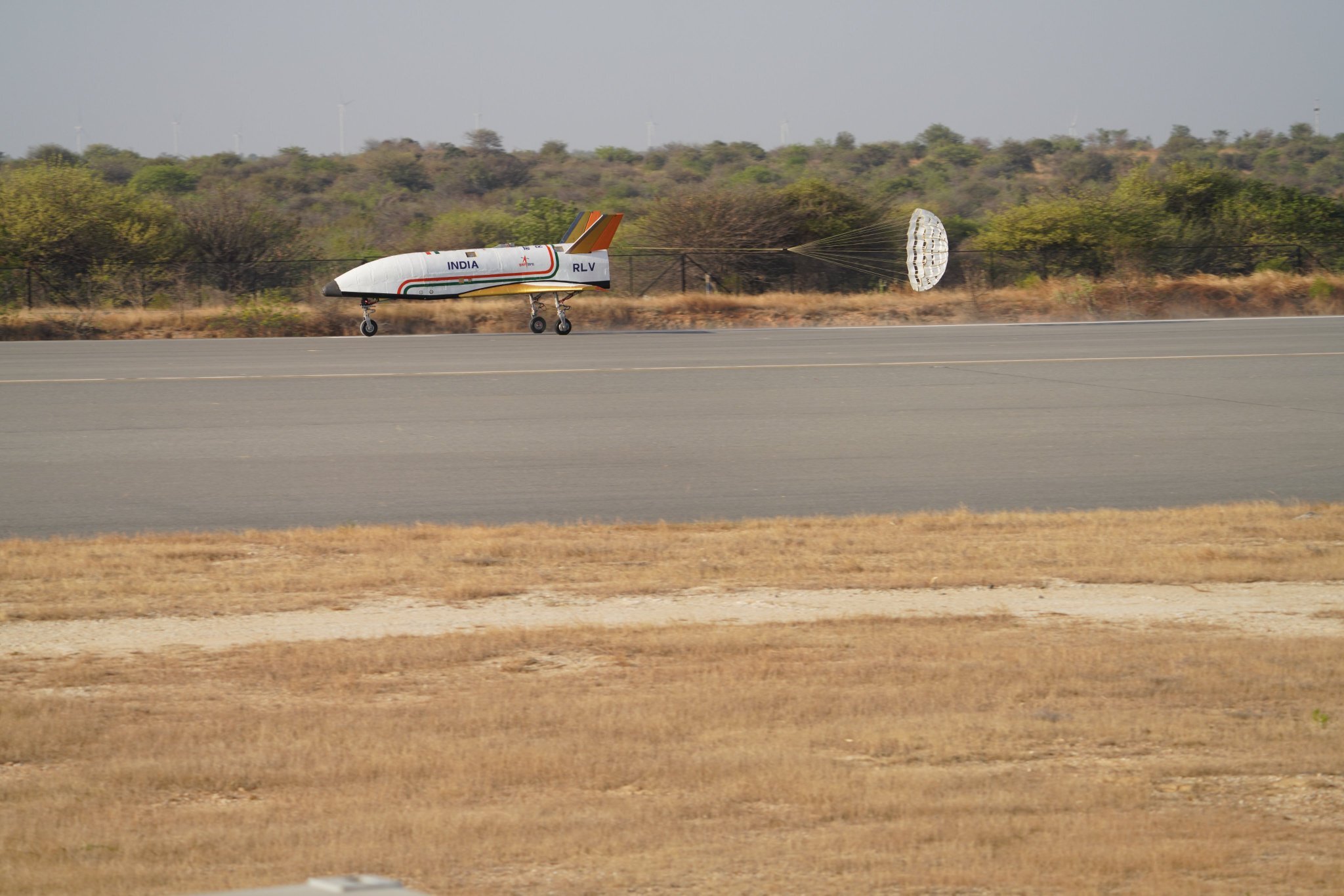

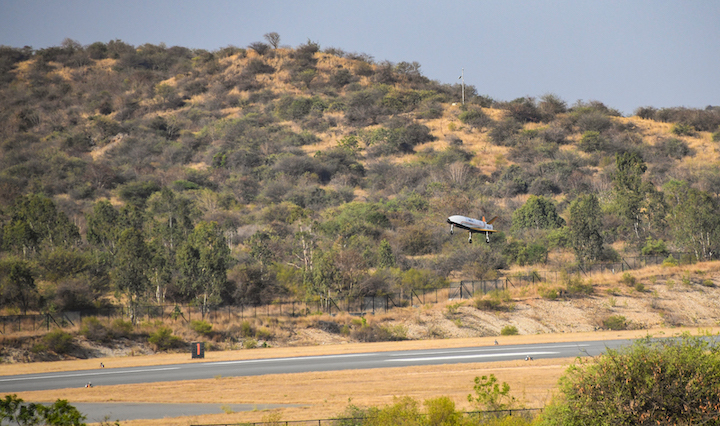




Quelle: ISRO


